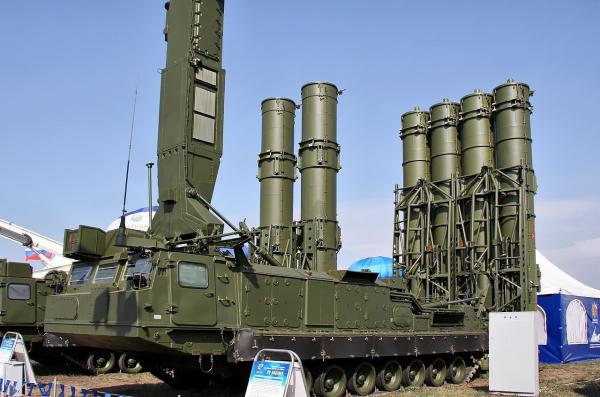America's new mega-bomb is an absolute terror — but Iran may have the last laugh
It's a weapon that justifies the use of the word "awesome" to describe its power. The Massive Ordnance Penetrator — or MOP — weighs in at 30,000 pounds, is almost 20 feet long and is designed to burrow through 200 feet of earth and 60 feet of concrete before detonating.
It's the king of the so-called "bunker busters" and is the largest non-nuclear weapon in the world.
Delivered by the stealthy B-2 Spirit heavy strategic bomber from as high as 20,000 feet, the MOP hits the ground at supersonic speed before slamming its way toward a hardened target through layered subterranean defenses such as native rock, reinforced concrete, and steel plates.
Once it reaches the bunker, the MOP's 5,300-pound warhead detonates, obliterating tunnels, underground chambers and … you name it.
MOP is hard to ignore. Especially for Iran, which has placed key components of its nuclear program such as centrifuges deep beneath the earth. But the MOP's delivery system could be shot out of the sky if an adversary has the right kind of air-defense missiles.
Iran wants those missiles — and Russia is willing to sell them.
In 2004, the U.S. Air Force decided it wanted a better bunker buster. The Air Force studied the use of the available BLUs — an acronym meaning "bomb, live unit" — during the 2003 Iraq invasion and found that many of them had poor penetration qualities or destructive force.
At the same time, the United States continued to suspect Iran and North Korea of pursuing nuclear weapons. Pyongyang carried out its first nuclear test in 2006. Washington suspected both countries were hiding at least part of their nuclear weapons programs underground.
Those factors renewed the Pentagon's interest in more and bigger weapons — particularly bombs dubbed "Big BLUs" during studies completed earlier in the 1990s. Big BLUs include the Massive Ordinance Air Burst or MOAB — wryly referred to as the "Mother Of All Bombs" because of its titanic destructive power.
But the MOAB isn't a penetrator. So Boeing and the Air Force Research Laboratory at Eglin Air Force Base teamed up to develop a mega-bomb that could ride in a B-2's weapon bay, use the Global Positioning System for guidance and hammer its way through solid rock.
By 2007, the Air Force successfully tested the MOP at White Sands Missile Range in New Mexico. Soon after, B-2 manufacturer Northrop Grumman announced a $2.5 million refit contract that allowed the B-2 to carry two MOPs internally — a hint that the MOP is intended to be dropped in pairs.
The weapon's very existence sends a message. That might explain why within the past 12 months there have been three MOP practice missions where B-2s from the Air Force's 509th Bomb Wing flew from Whiteman Air Force Base in Missouri to White Sands with live weapons.
Those tests may have signaled to Tehran that even its buried nuclear facilities at Fordow — which are inside a hollowed-out mountain — were within reach of a strike.
 The
SA-300VM surface-to-air missile system | (Wikipedia/Courtesy
War Is Boring)
The
SA-300VM surface-to-air missile system | (Wikipedia/Courtesy
War Is Boring)
In July 2015, Iran and the P5+1 coalition agreed to end sanctions in exchange for Tehran scaling back its nuclear program. But critics fear Iran could still cheat. Making matters more complicated, relying on MOPs to retaliate if Iran cheats faces some strategic difficulties.
For one, the U.S. could resort to bombing the sites if the White House is willing to take the risks that would come from putting several sophisticated and expensive aircraft — and their crews — in harm's way.
Iran badly wants to update its antiquated air-defense systems. That could pose serious problems for air crews tasked with flying MOP missions. In 2007, Russia committed to selling Iran the SA-300, one of the most sophisticated surface-to-air missiles in the world.
Russia "paused" on the deal, however, after international sanctions brought the sale into question. However, in 2015, the Kremlin offered to sell Tehran the SA-300VM variant of the air-defense system — and there is no indication that there will be any hold on this deal.
An SA-300VM can shoot down aircraft more than 120 miles away. In addition to missiles, it has advanced radar that can detect and track as many as 200 aerial targets as far as 150 miles away from the SAM battery. Whether that radar is capable of tracking a stealthy B-2 bomber is an open question.
However, if Tehran acquires the SA-300VMs in sufficient numbers to station the batteries on its southern coast, Iran will possess the ability to detect U.S. or allied aircraft taking off from neighboring countries, as well as from carriers in the Persian Gulf. Iran could also ring its sensitive nuclear sites with the SAMs.
B-2s would most likely fly their MOP missions from the United States and depend on aerial refueling to make the trip — but many mission support aircraft would be launched from the region.
The SA-300VM's radars could easily track these assets, such as electronic counter-measure planes flying nearby to aid the B-2s on their mission. Whatever the scenario, the U.S. has never faced the SA-300 or its variants in combat.
But if an American president ever orders the Spirits carrying MOPs to destroy Iranian nuclear facilities, that could all change … and raise the stakes on whether the United States can successfully use military power as a hammer if Iran violates the new agreement.From drones to AKs, high technology to low politics, War is Boring explores how and why we fight above, on, and below an angry world. Sign up for its daily email update here or subscribe to its RSS Feed here.